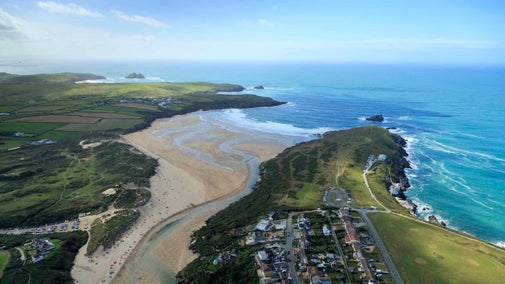
Donate
Everyone needs nature, now more than ever. Donate today and you could help people and nature to thrive at the places we care for.

West Pentire is part of over 780 miles of coastline the National Trust cares for. Overlooking Crantock Beach and the Kelseys, the headland is best known for the wild arable work that has been taking place here over many years.
Found between Holywell Bay and Crantock Beach and carefully managed for nature and people, the West Pentire arable fields explode in a riot of red poppies and yellow corn marigolds in early summer.
Please keep to the footpaths and don't walk or let dogs run into the fields. Wild flowers and plants won't grow where footsteps go. There are also ground nesting birds here.
The farmland here is managed specifically as a nature reserve for plants and wildlife associated with arable cultivation and is not commercially farmed. It’s one of only a few such sites in Britain. Year after year visitors come to take in this much-loved sight – fields full of wild farmland flowers, and a real reminder of traditional non-intensive farming methods of the past, which worked in harmony with nature.
Those exploring the headland may notice two distinct patterns of plant life growing. Half of the fields are ploughed either in the autumn or the spring and left fallow, with the other half ploughed and sown with barley in the spring.
West Pentire can be accessed on foot by the South West Coast Path and various public footpaths that criss cross the headland. There is no National Trust car park and visitors are advised to use one of the private car parks near the track that leads out to the fields. Please be aware the headland is very popular when the flowers are on show. We ask that you only park in designated car parks and keep access clear at all times for emergency vehicles and local residents.
On your visit you may wish to explore and photograph the flowers at West Pentire. To avoid damaging the plants, please stay on the various footpaths that cross the headland.
Please keep dogs on leads between March and July to protect ground nesting birds. The nearest public toilets are in Crantock village or the National Trust car park at Crantock Beach.

The areas sown with barley are intended to benefit declining species of birds such as corn bunting and mammals such as brown hare, as well as sheltering the rare arable plants. Alongside the cereal crop, wild flower plots are ploughed and then left for the seeds of dozens of species to germinate, including the poppies everyone loves to see.
This ongoing work should offer increased shelter for ground nesting birds like skylark and encourage corn buntings to use the site.
With your ongoing support, we're able to continue our vital conservation work. Thank you for helping to protect these special places.

Everyone needs nature, now more than ever. Donate today and you could help people and nature to thrive at the places we care for.
We are working to create 250 hectares of new species rich grassland at National Trust sites across Cornwall. The project, due to be completed by 2026, will help us rise to the twin challenges of biodiversity loss and climate change.

Learn about the coastal changes taking place at Crantock Beach with its dynamic dune system.

Help to look after National Trust places by observing a few simple guidelines during your visit and following the Countryside Code.